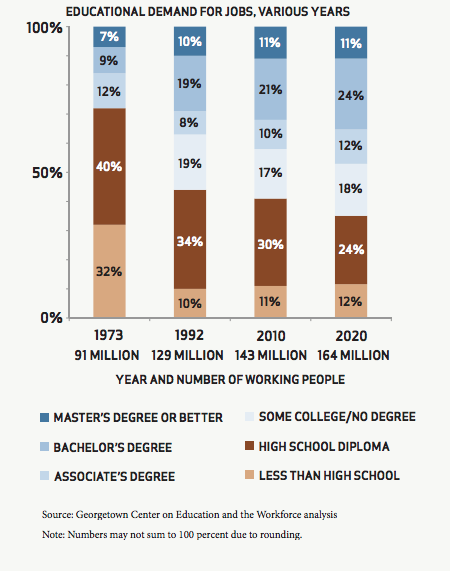Missouri’s ESSA plan paints grim future for our children
Under the Every Student Succeeds Act (ESSA), every state in the nation is required to submit a plan for improving education.
A new independent review of Missouri’s plan shows that we still have a long way to go when it comes to providing a quality education for all of our students.
According to the review, in 10 years, Missouri expects less than half of students with disabilities to achieve proficiency under this plan in either ELA or math, and less than two-thirds of black students and students eligible for free and reduced-price lunch to achieve proficiency in math.

Think about that for a second.
That means that our goal is for one out of every three black or free and reduced lunch child in the state to NOT be proficient in math after 10 years of working to improve education in this state.
As robots and machine learning become more and more prevalent and continue to transform the job market in ways we can’t even begin to predict for next year, let alone for the next decade, our hope and aspiration in Missouri is for one out three kids to not have the ONE skill that will be required for success in the future job market.
Other troubling findings:
- Missouri will use a statistical method that will assign value based on how schools perform compared to one another and not to any objective standard
- The state’s goals for progress to English language proficiency stand out as particularly low and lack urgency.
- It is unclear what consequences the state will impose for persistent low performance for struggling schools, and the plan offers little evidence that schools will be required to engage in aggressive, transformative strategies.
- The state’s model for measuring elementary and middle schools does not measure how well students are progressing relative to proficiency
- Missouri’s plan lacks strong protections for subgroups, uses a relatively high minimum subgroup size, and does not include subgroup performance in its summative accountability calculation.
Some history…
When Missouri submitted its ESSA, state education officials admitted that they were submitting a “skinny” plan because it was required by the federal government, noting that the majority of school improvement would be achieved through the Missouri School Improvement Program (MSIP).
“We have submitted to the government what we believe is important to satisfy them, but we have not gone beyond that purpose,” Chris Neale, assistant commissioner for quality schools at the Missouri Department of Elementary and Secondary Education (DESE), told members of the State Board of Education in August. “We’ve been saying for some time now ESSA only drives about 5 percent of school improvement in Missouri.”
The problem with this argument is there is still no way to realistically assess how the next MSIP will measure schools.
The basic framework for what is being measured in MSIP 6 to ensure quality has been presented to the State Board of Education, but that board has decided to table the new plan for an undetermined amount of time.
Even worse, the proposed plan does not include any scoring mechanism which means that it is impossible to tell how much attendance would count compared to academic achievement or graduation rates or any of the other long list of factors that are proposed to be evaluated in the new assessments.
So the state has told the federal government that it is submitting the bare minimum of a plan to improve schools because it has another plan that will actually achieve that, but that other plan is currently tabled and does not yet have any scoring mechanism to show what is being considered important in school quality.
« Previous Post: BOE: School Choice Works
» Next Post: CEAM Policy Panel experts offer nuanced view of education reform